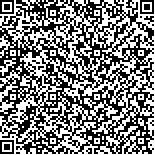| 本文已被:浏览 1001次 下载 561次 |

码上扫一扫! |
|
|
| 藻蓝蛋白对四氯化碳诱导的大鼠肝纤维化及肠道微生物的影响 |
|
翟诗翔1,2,3, 李文军1,3, 李莉莉1,3, 王莉4, 秦松1,3
|
|
1.中国科学院烟台海岸带研究所, 山东 烟台 264003;2.中国科学院大学, 北京 100049;3.中国科学院海洋大科学研究中心, 山东 青岛 266071;4.烟台市奇山医院, 山东 烟台 264001
|
|
| 摘要: |
| 为开发藻类活性物质的药用价值,探究了藻蓝蛋白(phycocyanin,PC)对四氯化碳(CCl4)诱导的大鼠肝纤维化的影响。试验中将大鼠随机分为3组,分别为对照组、肝纤维化组、CCl4+PC干预组。利用CCl4腹腔注射诱导肝损伤模型,在干预后,通过RT-PCR技术检测了大鼠肝脏中纤维化标志物I型胶原蛋白(collagen type I,Co-I)和α-平滑肌肌动蛋白(alpha-smooth muscle actin,α-SMA)的表达情况,通过16S rRNA高通量测序技术检测了干预后大鼠肠道微生物的组成和结构。RT-PCR结果显示PC干预显著降低了CCl4诱导的大鼠肝脏中纤维化标志物α-SMA和Co-I的表达。CCl4诱导使大鼠肠道菌群发生了紊乱,显著降低了具有抗炎活性的益生菌Bacteroides、Blautia、Parabacteroides的丰度,PC干预显著增加了具有抗炎活性的益生菌Blautia的丰度。结果表明PC能够改善CCl4引起的肠道菌群紊乱,这种改善可能有助于缓解CCl4导致的肝纤维化。 |
| 关键词: 藻蓝蛋白 肝纤维化 肠道微生物 炎症 四氯化碳 |
| DOI:10.11759/hykx20200314002 |
| 分类号:P375 |
| 基金项目:烟台市重点研发项目(2019XDHZ101;2020MSGY084) |
|
| Effects of phycocyanin on carbon tetrachloride-induced hepatic fibrosis and gut microbiota in rats |
|
ZHAI Shi-xiang1,2,3, LI Wen-jun1,3, LI Li-li1,3, WANG Li4, QIN Song1,3
|
|
1.Yantai Institute of Coastal Zone Research, Chinese Academy of Sciences, Yantai 264003, China;2.University of Chinese Academy of Sciences, Beijing 100049, China;3.Center for Ocean Mega-Science, Chinese Academy of Sciences, Qingdao 266071, China;4.Infectious Disease (Qishan) Hospital of Yantai, Yantai 264001, China
|
| Abstract: |
| The effect of phycocyanin (PC) on carbon tetrachloride (CCl4)-induced liver fibrosis and gut microbiota in rats were investigated to develop a medicinal value of algal active substances. Rats were randomly divided into three groups:control group (NC), hepatic fibrosis group (FIB), and PC + CCl4intervention group (FIB_PC). After a 4-wk-long intervention, the messenger ribonucleic acid (mRNA) expression of α-smooth muscle actin (α-SMA) and collagen type I (Co-I) in rat liver were detected by real-time reverse transcription polymerase chain reaction, and composition of gut microbiota were detected by 16S rRNA high-throughput sequencing. Expression of α-SMA and Co-I in liver were significantly higher in FIB group than those in NC group. Expression of α-SMA and Co-I in the PC group was decreased after PC intervention. CCl4 reduced the abundance of Bacteroides, Parabacteroides, and Blautia, which had anti-inflammatory activity. PC intervention significantly increased the abundance of Blautia, a probiotic with anti-inflammatory activity. These results indicated that PC could maintain gut microbiota homeostasis, which might alleviate liver fibrosis caused by CCl4. |
| Key words: phycocyanin hepatic fibrosis gut microbiota inflammation carbon tetrachloride |
